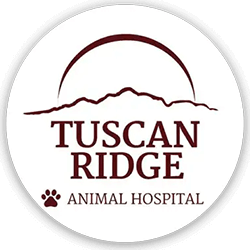At Tuscan Ridge Animal Hospital in Wake Forest, NC, our experienced team provides expert endocrine disease management for cats, including care for conditions like diabetes, hyperthyroidism, and adrenal disorders. We combine precise diagnostics with individualized treatment regimens to help stabilize your cat’s health and comfort. As your local pet health partner, we’re committed to delivering compassionate, specialized care to support your feline’s long-term well-being.
What are endocrine diseases?
Endocrine diseases are problems that result from hormonal imbalances in the body, either an overproduction or an underproduction of hormones that are needed to manage various bodily functions, such as metabolism and digestion.
What are the most common endocrine diseases in cats?
In cats, the two most common endocrine diseases we see are diabetes mellitus and hyperthyroidism.
What are the clinical signs associated with diabetes in cats?
The most common clinical signs associated with diabetes in cats include increased thirst, increased urination, and an increased appetite. Often, owners report that their cat is hungry all the time, sometimes ravenous. Despite eating more, the cat may experience weight loss, which is a hallmark sign of the problem.
How is diabetes diagnosed in cats?
Diabetes is relatively easy to diagnose with basic blood work. We require what we consider a minimum database, which includes a complete blood count (CBC) to look at the cat's immune system, a complete chemistry panel to assess organ function and electrolyte balance, and a urinalysis. Additionally, we check thyroid function. Most of the time, we can diagnose diabetes with just that minimum database.
Can you tell us about hyperthyroidism in cats?
Hyperthyroidism is another extremely common endocrine disease in cats, resulting from an overproduction of thyroid hormone. This causes the cat's metabolism to speed up to very fast levels. While it might seem beneficial for the cat to stay lean, the metabolism is so fast that the cat cannot consume enough food to keep up with the metabolic rate, leading to illness.
What are the signs of hyperthyroidism in cats?
The most common clinical signs of hyperthyroidism in cats include chronic, insidious weight loss despite a robust or ravenous appetite. Other signs include vomiting, diarrhea, a lackluster hair coat, and a somewhat scurfy and unkempt appearance. Increased thirst and urination are also often reported because many cats with hyperthyroidism also suffer from some degree of chronic kidney disease, although kidney disease is not necessarily considered an endocrine disease in cats or dogs.
How is hyperthyroidism diagnosed?
Like diabetes, hyperthyroidism is diagnosed with basic blood work. We run a complete blood count (CBC) to assess the cat's immune system and a full chemistry panel to evaluate organ function and electrolyte balance. Lastly, we perform a urinalysis and measure total T4 levels, which is the primary parameter used to diagnose hyperthyroidism.
Thanks for spending some time with us today. I hope you found this chat informative. If you have any questions, don't hesitate to reach out to us at Tuscan Ridge Animal Hospital.
If you have other questions and you'd like to reach out to us, you can call us directly at (919) 556-1944, or you can email us at [email protected]. But please do reach out, and we'll get back to you as fast as we can. Don't forget to follow us on social media Facebook, Instagram!
